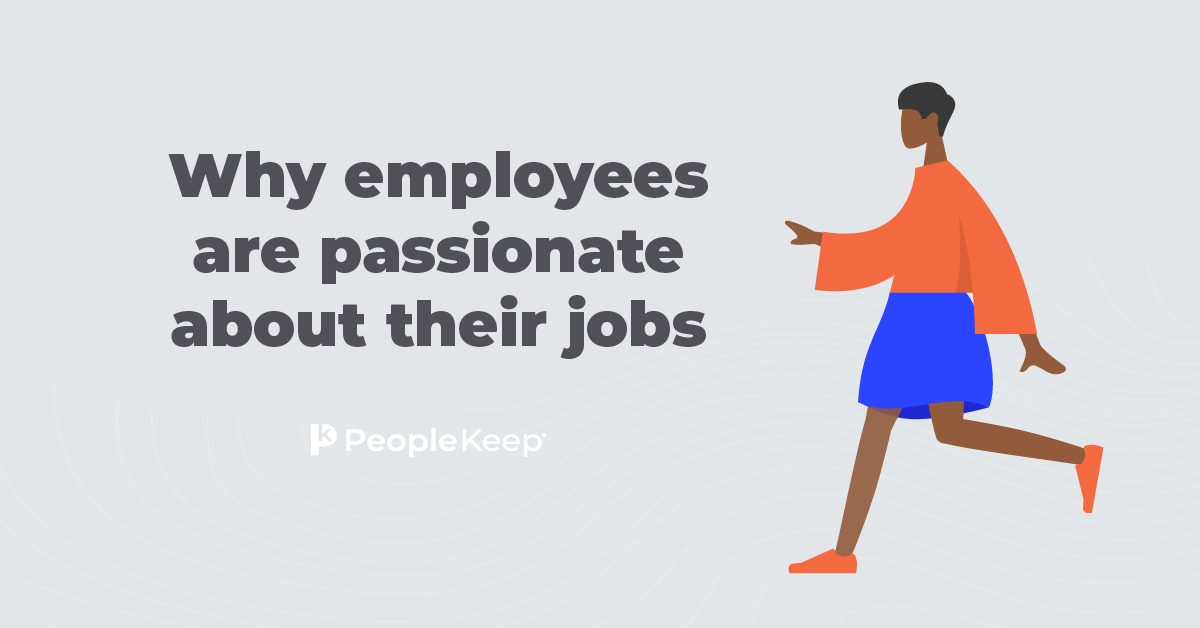Five signs of a toxic work culture
By Elizabeth Walker on January 19, 2024 at 9:00 AM
Your employees can make or break your organization. When you have a positive company culture, your team’s productivity, satisfaction, and engagement will soar. However, a toxic work culture can lead to burnout and resentment—ultimately driving your employees out the door.
Several factors can breed toxic environments, but the results are the same. According to MIT Sloan1, employees were 10.4 times more likely to leave their jobs during the Great Resignation due to a toxic work environment than compensation.
A toxic workplace culture can affect all your employees, whether your company is in-office or remote. It can even harm their health. It’s crucial to stop toxicity from spreading before it starts. In this blog post, we’ll cover five signs of toxic work culture and how you can combat them.
Takeaways from this blog post:
- A toxic work culture is characterized by unhealthy practices and behaviors that affect the entire organization, which can lead to negative employee satisfaction, decreased productivity, and a hostile work environment.
- Factors that contribute to toxic culture include disrespect, unethical behavior, cutthroat competition, and abusive bullying. Absence of diversity, equity, or inclusion is also a top factor.
- Toxic work cultures can lead to reduced profits, worsened job performance, and a lack of trust, highlighting the importance of addressing and revamping organizational culture.
What is a toxic work culture?
A toxic work culture is a workplace environment steeped in unhealthy practices and bad behaviors that ultimately drive negative discourse and agitation throughout the organization. A toxic workplace doesn’t occur on an individual level. It’s a systemic issue that permeates an entire organization.
The factors that drive an unhealthy culture differ from organization to organization. Still, common causes include outdated company policies, difficult management styles, a profit-first mentality, a subpar benefits package, long work hours, and lack of communication.
A comprehensive study of 1.3 million Glassdoor employee reviews2 found five common characteristics to describe toxic environments.
According to the results, the top five factors that contributed toward a toxic work culture ranked in order of impact were:
- Disrespect: Lack of respect negatively impacts employee satisfaction as it shows your employees you don’t care about them or their efforts. Also, it creates an environment where team members feel it’s okay to treat others the same way.
- Absence of diversity, equity, and inclusion (DE&I): Employees see not promoting DE&I efforts in your organization as discriminatory and failing to create an open and safe environment, leading to toxicity. It could also make it more challenging to hire younger candidates. According to a RippleMatch survey3, 75% of Gen Z job candidates would reconsider applying for a company with poor DE&I efforts.
- Unethical behavior: Employees see your company’s list of core values as the foundation of your organization. This negative behavior puts workers in a position to participate in potentially illegal, non-compliant, and immoral activities, leading to mental stress.
- Cutthroat competition: An environment that rewards undermining others and competition among team members can become stressful and unhealthy. It can also lead to fractured teamwork, ineffective communication, and possibly even interdepartmental sabotage.
- Abusive bullying: 0.8% of the analyzed Glassdoor reviews referenced an abusive manager. Hostility can range from bullying to harassment to abuses of power from toxic employees and managers, leaving workers feeling unappreciated, insecure, or unsafe.
How does a toxic work culture affect employees?
A toxic workplace doesn’t just negatively impact your business—it harms employees professionally and personally. Toxicity creates an unhappy work environment where employees can’t flourish and thrive. Productivity suffers, motivation drops, and even infighting results. Not only are these bad for your bottom line, but it also makes burnout more likely.
Toxicity can also impact your employees' health. When employees feel overworked or sense a lack of respect, anxiety and depression can kick in. They may dread coming to work or feel stuck in their job, leading to chronic stress and other mental health problems.
The American Heart Association4 found that poor mental health can create physical symptoms. Some scholars5 even estimate that job insecurity and high work demands contribute to about 30,000 deaths each year. So, having a positive work environment that guarantees your employees’ psychological safety is in your best interest.
Five signs of a toxic work culture
Every employer's goal should be to foster a positive corporate culture that attracts and retains happy employees. However, if you’re not vigilant, toxicity can spread faster than you can manage. Luckily, there are a few indicators that are easy to notice. Let’s review five common signs of a toxic culture below so you know how to spot them in your organization.
1. Turnover is high
There are many reasons why employees leave their jobs. However, a high turnover rate is almost always a sign of a toxic work environment. When workers experience burnout or frustration, they start job searching. From an employee’s perspective, finding new employment is easier than waiting for a company to fix its corporate culture.
High employee turnover puts significant financial strain on employers. Every time a business replaces a salaried employee, it costs an average of six to nine months' salary to hire and train their replacement. So turnover isn’t something you can ignore. If turnover is an issue at your organization, it’s time to look closely at your culture.
First, you can tackle turnover by going straight to the source. Conduct detailed exit interviews with your employees before they leave your company. You can use this information to learn more about their experiences so you can make adjustments and improvements going forward.
You can also send an engagement survey to your current employees for constructive feedback to understand what keeps them at your organization and what changes they want to see.
Another way to fight turnover is by ensuring your employees receive enough support. Work with your managers and leaders to ensure team members receive the training and tools necessary to succeed.
Lastly, make sure you provide enough professional development opportunities. Toxicity can also stem from employees feeling like there aren't enough opportunities for advancement. If this is the case, they’ll look outside your organization for jobs where they have room to grow.
2. Unsatisfaction with benefits and perks
A robust benefits package shows your employees you care about them inside and outside of the workplace. So naturally, the reverse shows the opposite. When employers don’t offer workers enough benefits, employee morale, job satisfaction, and retention drop, negatively impacting corporate culture.
You may think salaries and bonuses are sufficient, but one survey6 showed that 69% of employees would accept a job over another because of better employee benefits. And if you’re looking to highlight your healthy culture to candidates, 82% of employees said an employer's benefits package is a factor in whether or not they accept an organization’s job offer.
If you created a slim benefits package thinking it would meet your employees’ needs, you should revisit it. If you need help getting started, you can personalize your benefits with an employee survey to determine what specific perks they want. This will increase engagement and show your employees that their opinions matter.
Make sure your benefits package contains various options. For example, group health insurance may not work for every employee, so consider a health reimbursement arrangement (HRA) or a health stipend. These flexible benefits offer a more personalized form of financial support as they allow you to reimburse your employees and their dependents for various out-of-pocket medical expenses and individual health insurance premiums.
Lastly, make sure you include non-monetary benefits as well. Perks like paid time off (PTO), employee assistance programs, flexible work schedules, wellness programs, and professional development opportunities are just as important as insurance. Better yet, many modern benefits, like stipends, also support remote employees, so you can leave no one out.
3. Negative company reviews
Company review platforms, like Glassdoor and Indeed, have increased in popularity for job seekers. Think of these websites as the court of public opinion. If your company has several negative reviews, it can give you a bad reputation, affecting your ability to recruit and retain top talent.
Current and past employees write negative reviews based on their experience at your company. Suppose they experience issues like micromanagement, lack of company values, poor communication, or excessive workloads and don’t feel they can openly voice their concerns at work. In that case, your company is even more likely to receive negative employee input on these platforms.
These platforms allow individual employees to post anonymously, so responses are more likely to be honest, which makes them valuable. If you consistently receive negative reviews, take that as an opportunity to revamp your organizational culture.
Start by overhauling your core values, practice active listening by asking for employee feedback, and revising your brand. Once you have a positive work culture, you’ll be able to attract more job seekers and raise employee retention.
4. Lack of employee appreciation and rewards
Every employee wants praise for their accomplishments—even if they’re only minor successes. A lack of recognition can lead to an environment where employees don’t feel appreciated. Similarly, animosity and resentment between teams can grow if you only recognize monetary wins, like your sales department reaching its quarterly goal.
You also want to ensure your employees don’t feel targeted. Toxicity can occur if your primary strategy for calling out errors your employees make is to share them publicly. Mistakes happen, and everyone can make improvements. But showing dissatisfaction, especially after rewarding someone else, is abusive behavior and only serves to wear down your employees.
For a more positive work culture, consider implementing an employee rewards program. You can give bonuses, gift cards, or extra perks to high-performing workers to show appreciation. You can also use company meetings and town halls as regularly scheduled times to recognize employees for successes.
Managers should voice constructive criticism and feedback privately so employees don’t feel ashamed in front of their teammates. Not only does this allow for more open and honest communication, and it's more likely to be helpful. Development is most effective when individuals feel supported and can learn from their mistakes in a healthy work environment.
5. Poor work-life balance
Employees understand that work is important, but no employee wants to spend all their free time working. When employees work through lunch, frequently work past their set hours, don’t take breaks, or never take a vacation, their work-life balance suffers.
Poor work-life balance can result from unrealistic expectations set by individual leaders, an overly heavy workload, too many responsibilities, a reduced team due to turnover, and other factors. This becomes toxic because it shows employers care more about results than their employees' happiness, well-being, and family.
Management may expect everyone to work long hours. However, a lack of boundaries and overworking your employees won’t help you in the long run. Clearly outline each employee’s role and responsibilities, deadlines, and how you measure success. This will lessen burnout and allow your employees to manage their time more effectively in the best way for them.
Also, ensure your managers set reasonable workloads for their direct reports. If a team is doing too much, reprioritize the tasks, adjust your goals, or hire additional employees to fill any gaps. If your employees are experiencing burnout, they won’t be effective.
Lastly, encourage your staff to use their PTO and consider implementing a flexible work schedule. When your employees have more job flexibility and don’t feel judged for taking time off, they’ll be more motivated and energized upon returning, boosting engagement and productivity.
Conclusion
The common saying that “employees don’t leave jobs, they leave toxic workplaces” remains true today. A toxic culture will reduce profits, worsen job performance, create workplace stress, and drive turnover. That’s why understanding what causes toxic workplaces is your first step in ensuring it doesn’t spread at your organization.
Fixing a toxic corporate culture starts from the top. Review your company’s values on a regular basis and check in with your employees to ensure you’re meeting their needs. As an employer, working to create a positive culture where everyone feels appreciated, supported, and respected is the best way to have a long-running and successful business.
This article was originally published on March 1, 2023. It was last updated on January 19, 2024.
2. https://sloanreview.mit.edu/article/why-every-leader-needs-to-worry-about-toxic-culture/
3. https://resources.ripplematch.com/what-gen-z-wants-at-work-data-report
4. https://www.heart.org/en/healthy-living/healthy-lifestyle/stress-management/stress-and-heart-health
Check out more resources
See these related articles

How to create a positive workplace culture
Building a positive workplace culture is key to employee satisfaction and company success. Discover practical tips in this blog post.

Why employees are passionate about their jobs
We'll take you through five reasons employees are passionate about their jobs and how you can help drive their passion with a positive workplace culture.

5 tips for happy employees
Discover 5 practical tips on how to make employees happy. Boost morale, increase productivity, and create a positive workplace culture.



